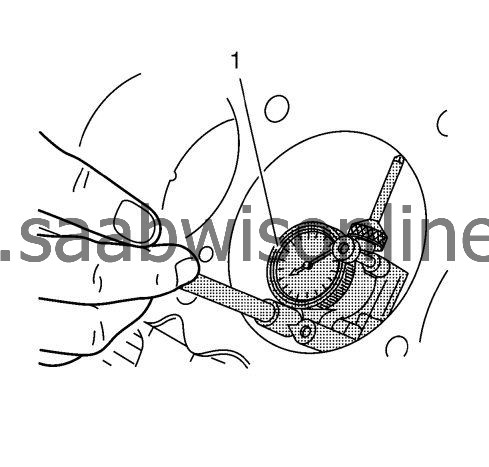Engine Block Cleaning and Inspection
| Engine Block Cleaning and Inspection |
Special Tools
EN-8087 Cylinder Bore GaugeFor equivalent regional tools, refer to Special Tools .
| 1. |
Clean the sealing material from the gasket mating surfaces (2).

|
|
| 2. |
Clean the engine block (1) and lower crankcase in a cleaning tank with solvent appropriate for aluminum.
|
|
| 3. |
Flush the engine block with clean water or steam.
|
|
| 4. |
Clean the oil passages.
|
|
| 5. |
Clean the blind holes.
|
|
| 6. |
Spray the cylinder bores and the machined surfaces with engine oil.
|
|
| 7. |
Inspect the threaded holes. Clean the threaded holes with a rifle brush. If necessary, drill out the holes and install thread inserts.
|
|
| 8. |
Use a straight edge and a feeler gauge to check the deck surface (1) for flatness. Refer to Engine Mechanical Specifications . Replace the block if it does not comply with the specified dimensions. NEVER machine the engine block. 
|
|||||||
| 9. |
Inspect the oil pan rail for nicks. Inspect the front cover attaching area for nicks. Use a flat mill file to remove any nicks.
|
|
| 10. |
Clean the sealing material from the gasket mating surfaces on the lower crankcase engine block side (1).

|
|
| 11. |
Clean the sealing material from the gasket mating surfaces on the lower crankcase oil pan side (1).

|
|
| 12. |
Inspect the crankshaft main bearing bores. Use the
EN-8087
gauge (1) to measure the bearing bore concentricity and alignment.

|
|
| 13. |
Replace the engine block and bed plate if the crankshaft bearing bores are out of specification.
|
|
| 14. |
Inspect the cylinder bores using the
EN-8087
gauge (1). Inspect for the following items:

|
|
| • |
Wear
|
| • |
Taper
|
| • |
Runout
|
| • |
Ridging
Refer to Engine Mechanical Specifications for specifications. |
| 15. |
If the cylinder bores are out of specification, replace the block.
|
|


